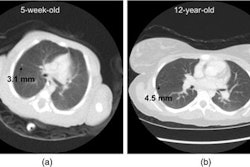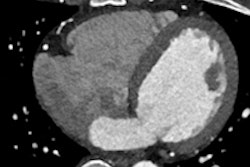Before deciding to order CT scans for pediatric patients, clinicians should first consider other imaging options, radiation safety measures, and parent education, according to a study in the May/June issue of Radiologic Technology.
The recommendations come from researchers at Shawnee State University and Midwestern State University, who looked at peer-reviewed journal articles published within the past 10 years, as well as web-based information about CT and its effects on pediatric and adult patients (Radiol Technol, May/June 2016, Vol. 87:5, pp. 495-501).
The importance of education, use of traditional and bismuth shielding, and radiologists' review of examination requisitions are among the topics covered in the literature review.
The study credited initiatives such as the Image Gently campaign for raising awareness about the need to minimize radiation dose when imaging children with CT.
In a statement from the American Society of Radiologic Technologists (ASRT), study co-author Kristina Darnell said these kinds of programs appear to be effective in educating the medical community about the importance of considering alternative imaging procedures such as MRI or ultrasound.
"Substituting CT scans with magnetic resonance and ultrasound procedures should always be considered as they don't use ionizing radiation," according to the ASRT statement. "Radiologists working alongside the referring physician can collaborate to determine if MR or ultrasound is more appropriate depending on the case."
While bismuth shields can be used during CT procedures to reduce radiation exposure, the study found that not all CT departments use the option as a standard protocol.
Previous research has shown that bismuth shields can reduce radiation dose from 18% to 74%.
However, some believe that the shields may adversely affect image quality, and the American Association of Physicists in Medicine (AAPM) has endorsed other shielding methods to reduce radiation during CT scans, according to the authors. They believe that more research is needed on the effectiveness of bismuth shielding and other technical factors that can be modified to lower dose.
The authors also stressed the importance of educating parents about CT.
"Parents sometimes do not understand what is involved in their child's radiology examination or the risks associated with it," according to the ASRT statement. "When radiologists or pediatricians discuss an examination with parents, they help parents become fully informed while showing respect for their autonomy."




















